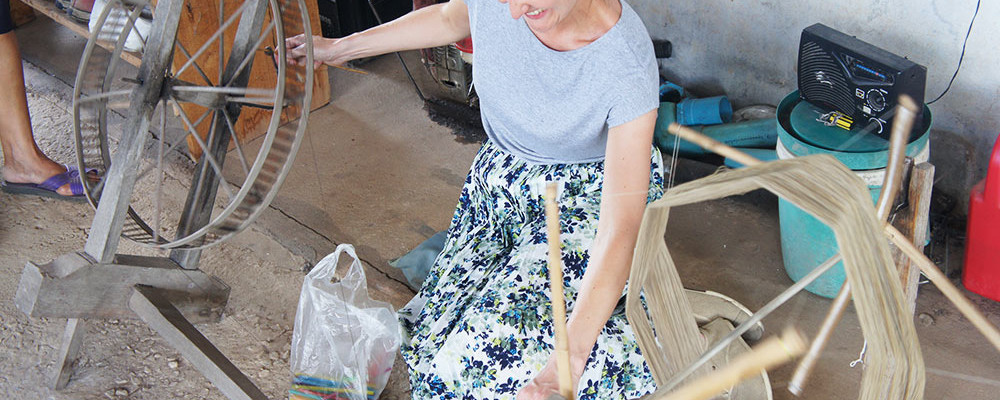
A Piece of Paradise: Weaving Eco Friendly Fabrics In A Thai Back Garden
One of the reasons I started my eco friendly fabric company, Offset Warehouse, was because I couldn't tell where all of the fabrics I was using came from. I didn't want to have any part in the horrendous treatment of workers and the destruction to our planet that the fashion and interiors industry is responsible for. I wanted to be sure that all of the fabrics I was using for my creations came from ethically sound places. I set up Offset Warehouse filled with eco friendly fabrics, with information on all of the ethical credentials of every fabric.
A Piece of Paradise: #weaving #ecofriendly #fabrics in a #Thai back garden

Today, I'm really pleased to let you behind the scenes of our manufacturing in Thailand, to show you just how incredible the production of the textiles is, and the beautiful people who make these eco friendly fabrics. The fabric is manufactured by hand by hill tribes who live in Northern Thailand, and for me, it's truly a piece of paradise.
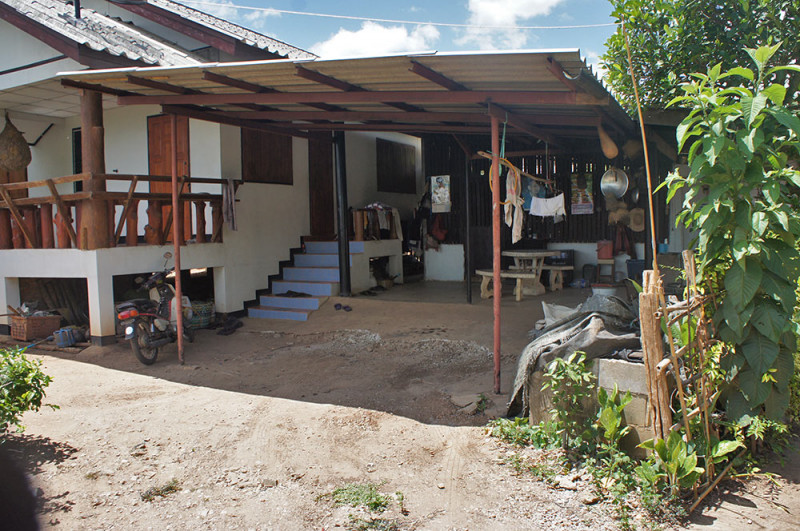
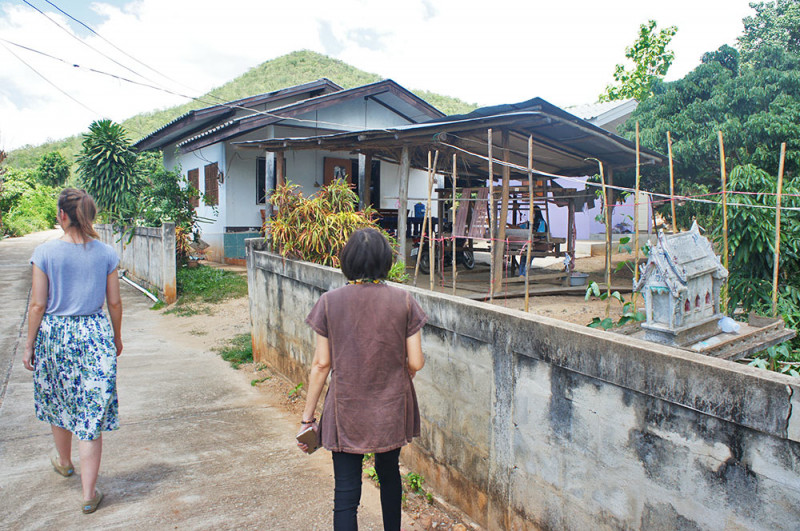
Because of all the rain and humidity, the hills are covered in lush, rainforest greenery. It's a truly stunning place. Every village has at least one truck - you can just see ours below. They lumber around, filled to the brim with local produce, carting their wares from village to village.
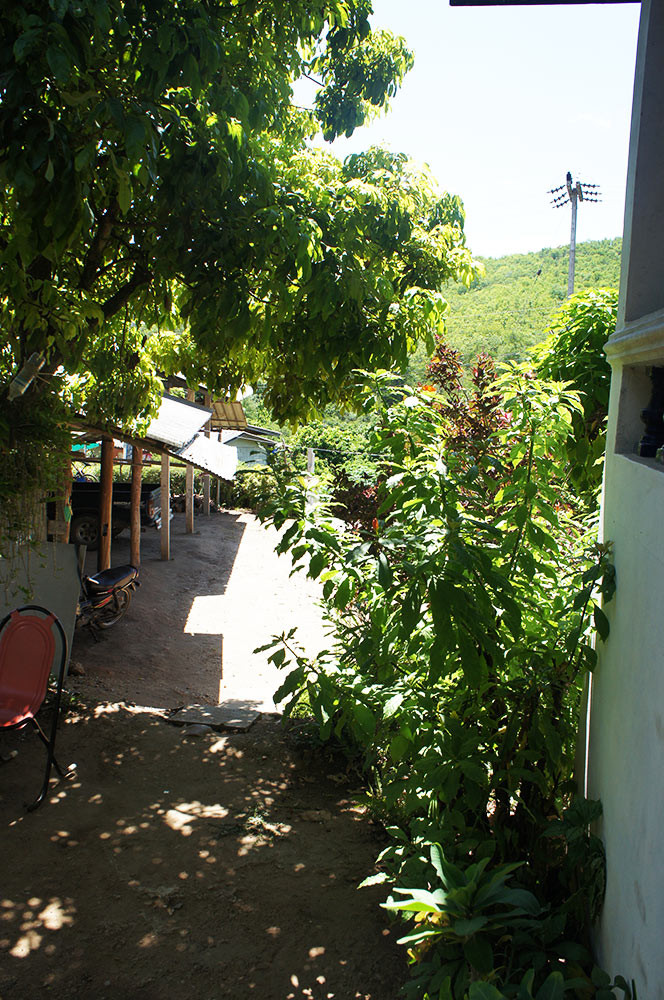
All the houses here are enormous! Open plan, with wide spaces outside to sit and weave. It's incredibly hot and humid all year round, but the weavers (unlike myself, sweating buckets) are acclimatised to the heat. I can't believe the number of layers the weavers wear, particularly when in "dying mode". They also wear face masks, to keep out the dry dust and rogue fibres.
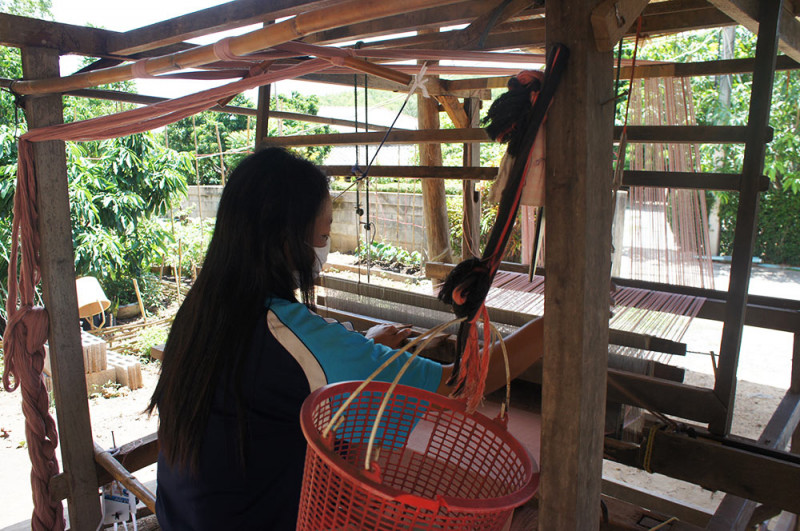
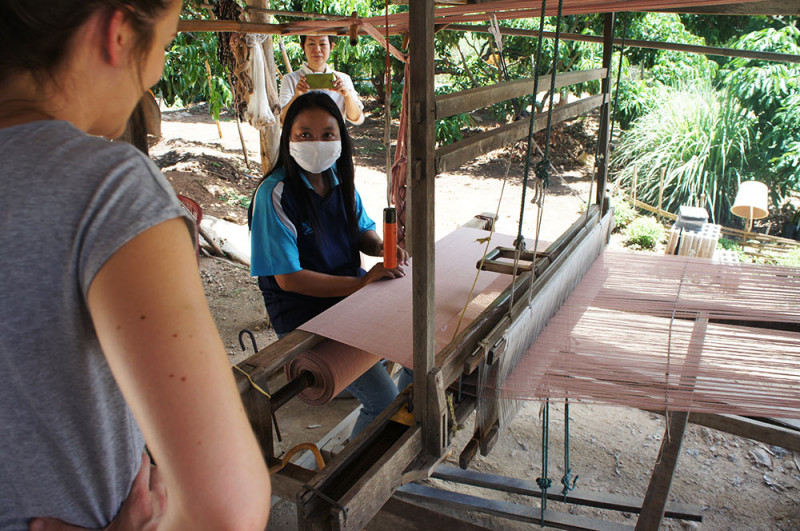
Recognise this beauty above (I'm talking about the fabric)? That's right, our stunning Heather Purple Handwoven Crossweave. Our weavers are absolutely immaculate with their construction - just look at how even all of her threads are. Even the rolling of the fabric is straight - that indicates a good tension. Have you tried rolling a 100m length of fabric? It's nearly impossible to keep the fabric from slowly veering off to one end.
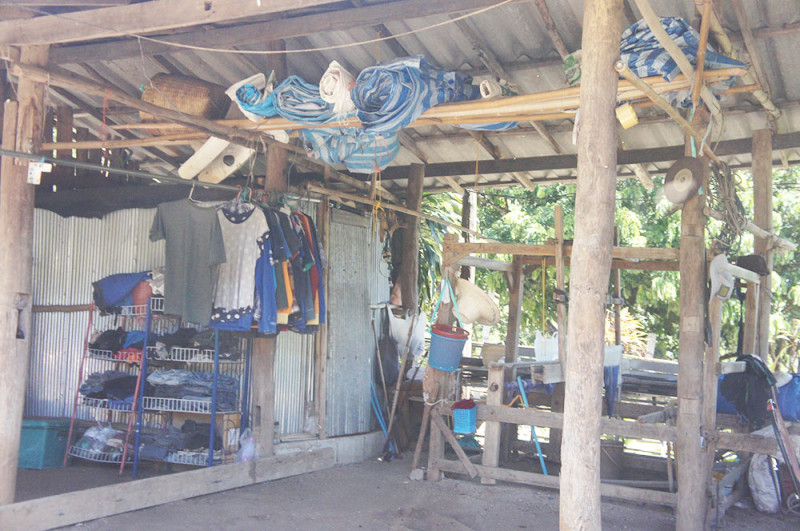
Spot the old loom (above) currently being used as a hanging bits and bobs rack! Looms are a-plenty here. You'll find rickety, abandoned, skeletal looms in the gardens all over the place. I'd quite like an old loom in my garden to crawl plants up. It's a bit of a trek to get one back from here, mind you.
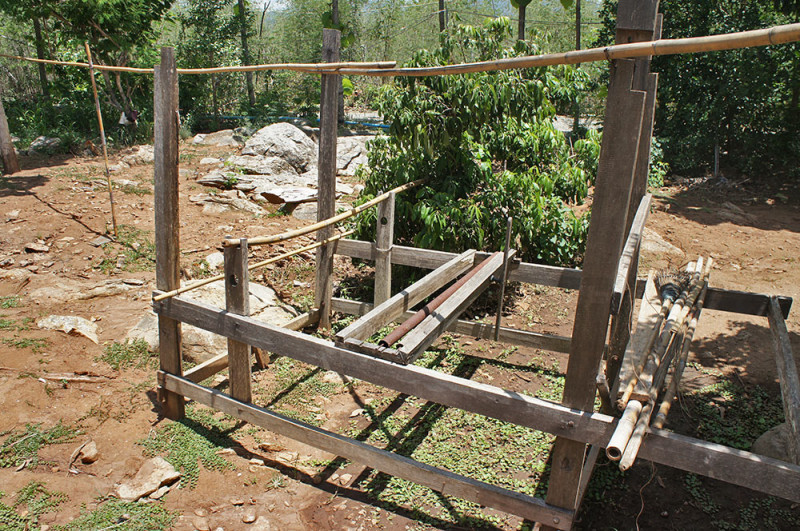
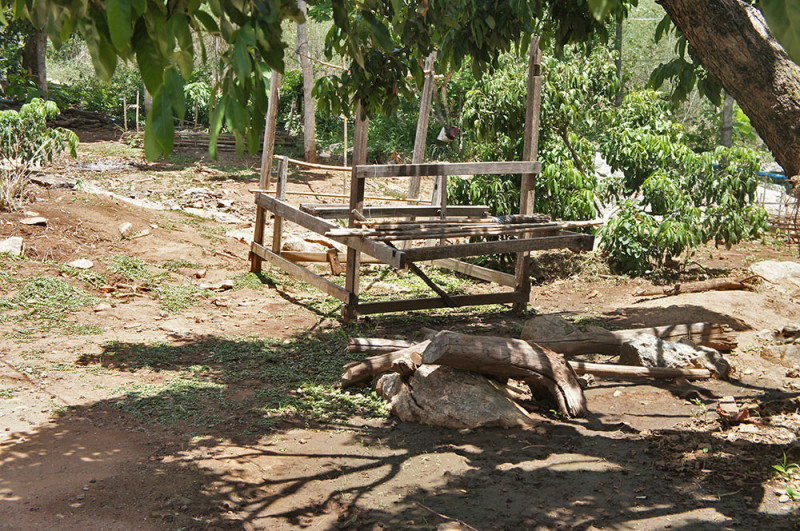
Let's start at the beginning. It all starts with these things here...
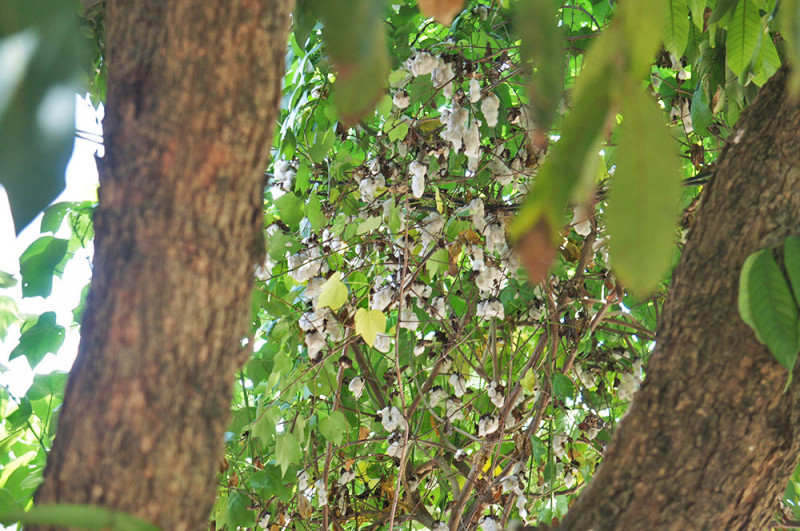
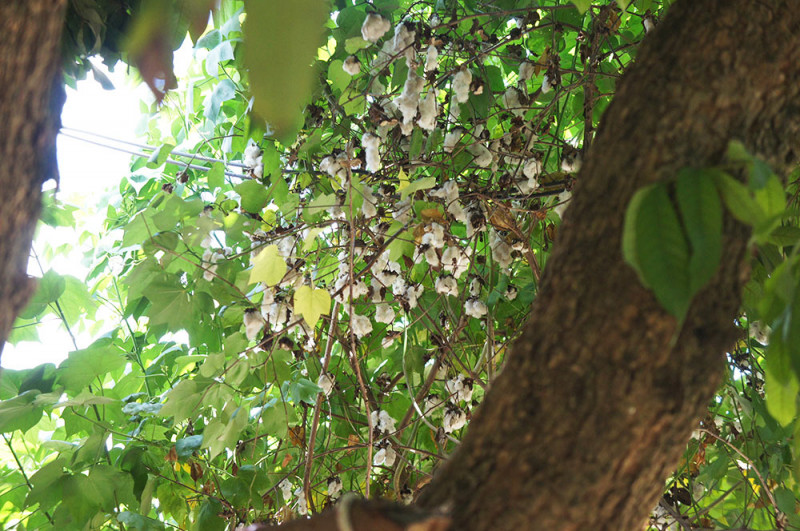
...Cotton plants! Ok ok, so not actually these cotton plants. These cotton plants grow wild in the hills, and where they may once have been collected to turn into yarn, the hill tribes have since changed their production and now buy in their cotton yarns - sorry to spoil the romanticism there. One day, the tribes may well spin their own yarns again, but as the craft of weaving fabric slowly dies out, there simply isn't the man power to do so. That's another reason that I'm so pleased to support these groups. As the children of these weavers are encouraged to move to the cities, and take "real" jobs in accounting and finance, this beautiful craft is slowly being lost. It's such a tragedy. But with companies like Offset Warehouse, we provide these weavers with the means to continue their work and the funding to train others. It's a beautiful thing.
Once the weavers have their cotton, they dye it using natural dyes. This is a colour card of the range of dyes available - aren't they incredible? I know what you're thinking, "Ooh they must use awfully harsh chemicals and mordants to fix those" - NOPE! We're passionate about only using the most environmentally friendly fixative - salt! Now I know what you're thinking AGAIN - and NO the colours don't wash out. Trust me... I tried, and tried. A little fading, sure, but the colours are vivid and gorgeous as ever. I've rarely seen colours like these achieved with natural dyeing and salt fixing.
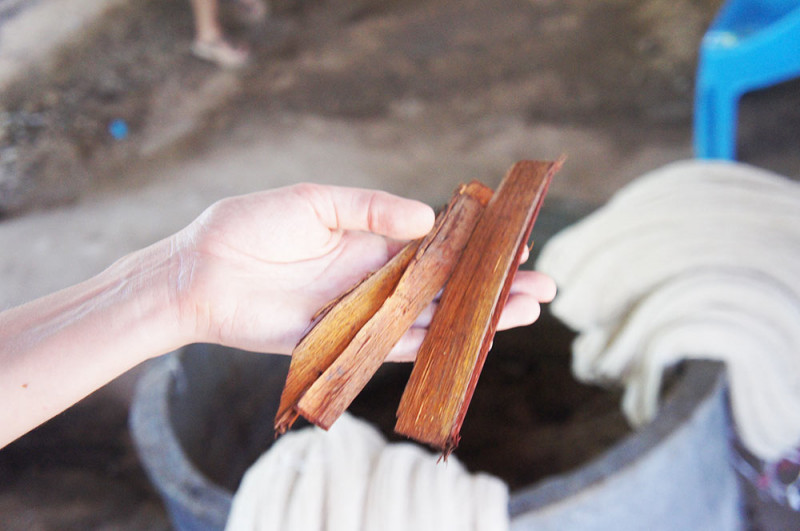
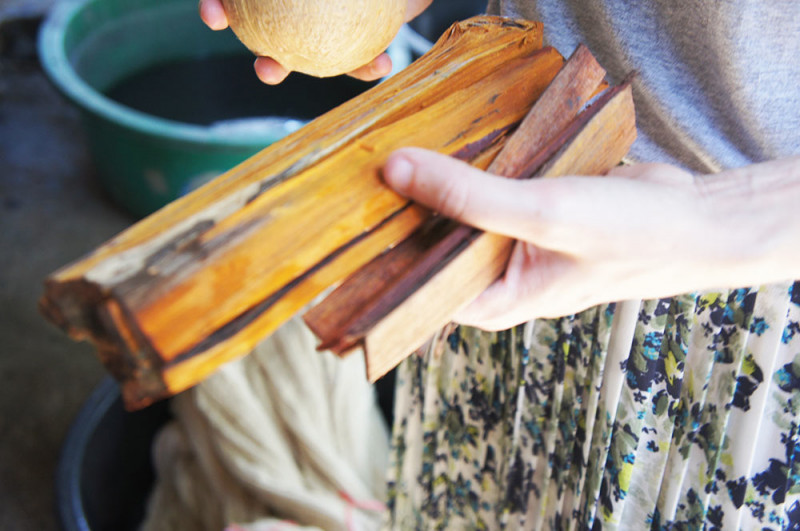
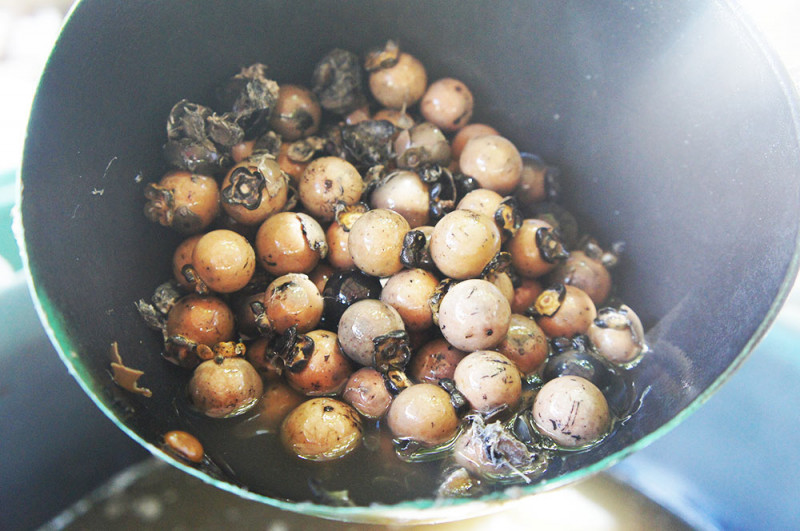
These are just a handful of the raw materials that create the incredible fabric colours. Can you believe that these little seed pods created the black colour of our
Ebony Diamond Hand Woven Ikat? The raw materials are all found locally and are harvested sustainably. That's incredibly important for us. The impact of the fashion and interiors industry has a lot to do with taking raw materials faster than they can regrow - it's completely unsustainable. Harvesting the materials using chemicals that destroy the remaining lands is also a huge problem. These raw materials are collected without the use of any harsh chemicals whatsoever. Once all of the raw materials have been collected, they need to be prepared.
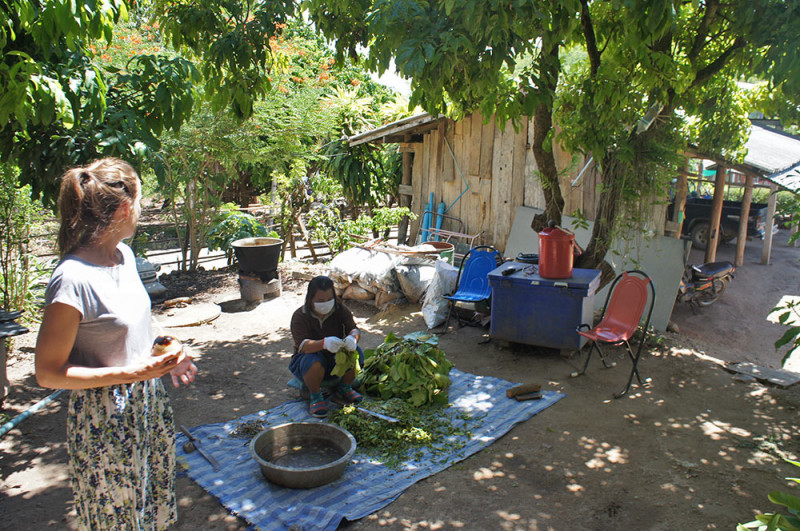
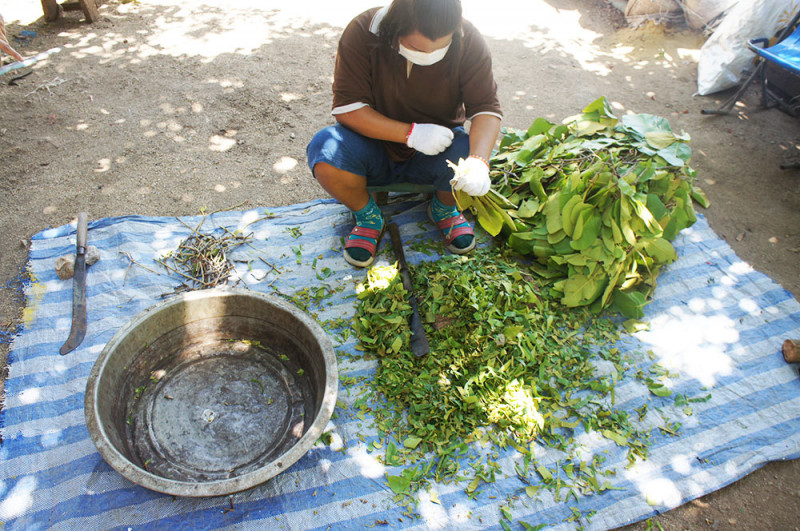
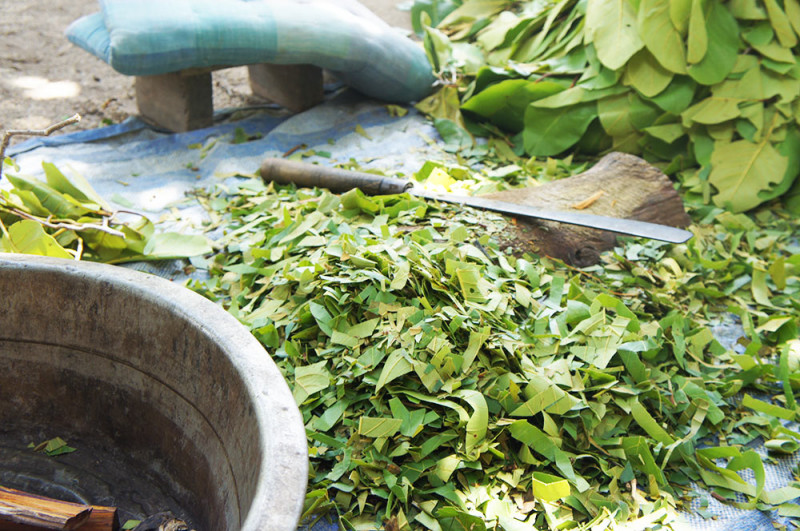
All of the leaves are finely chopped. The bark is also cut into smaller strips. This helps to release all of the incredible colours.
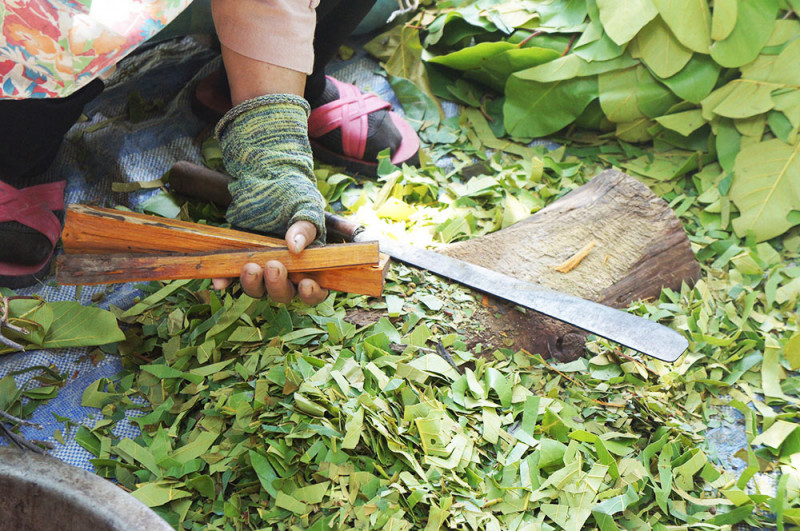
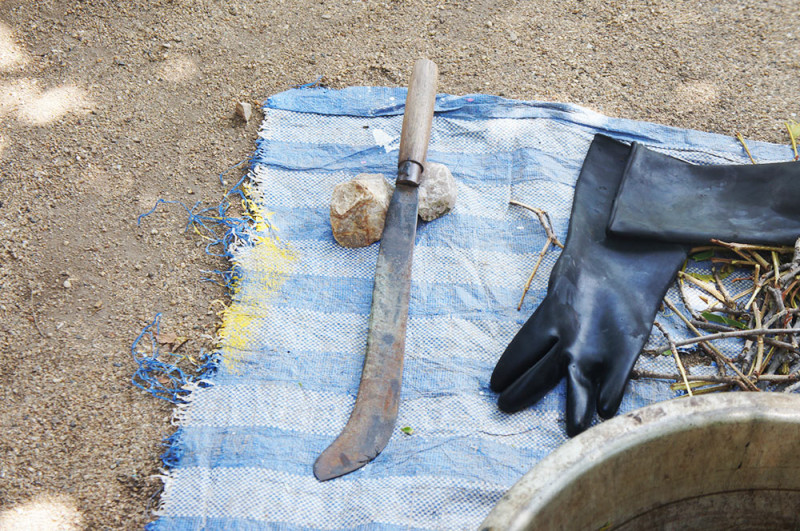
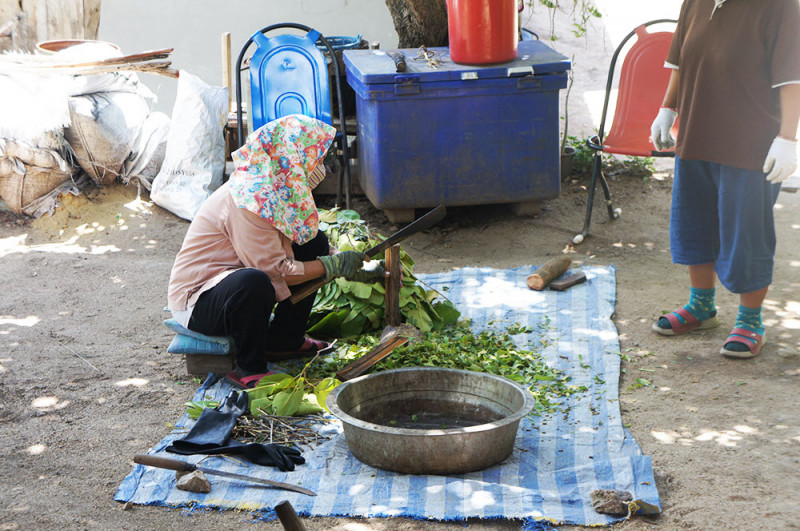
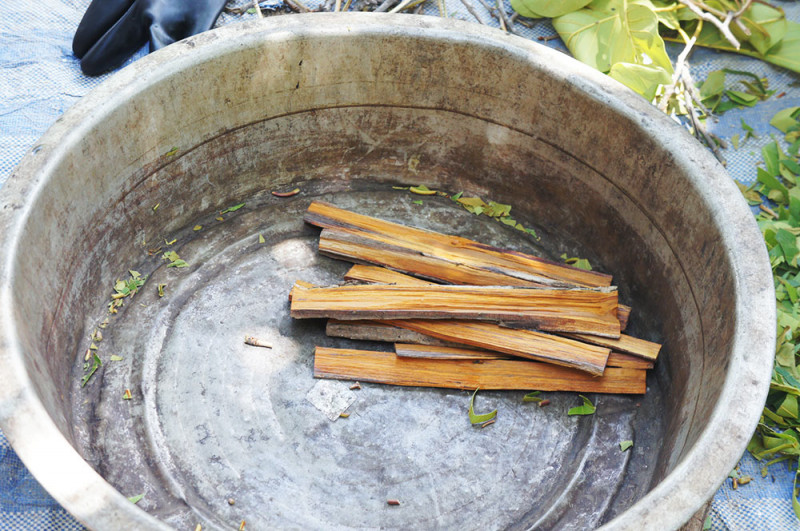
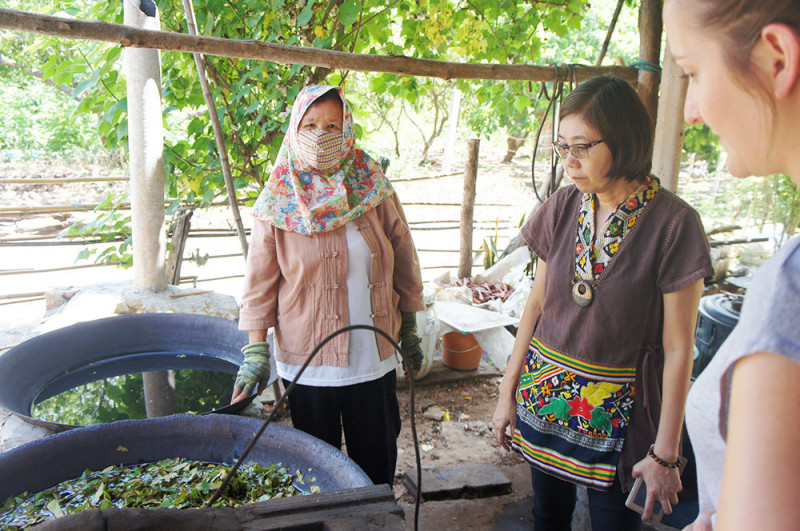
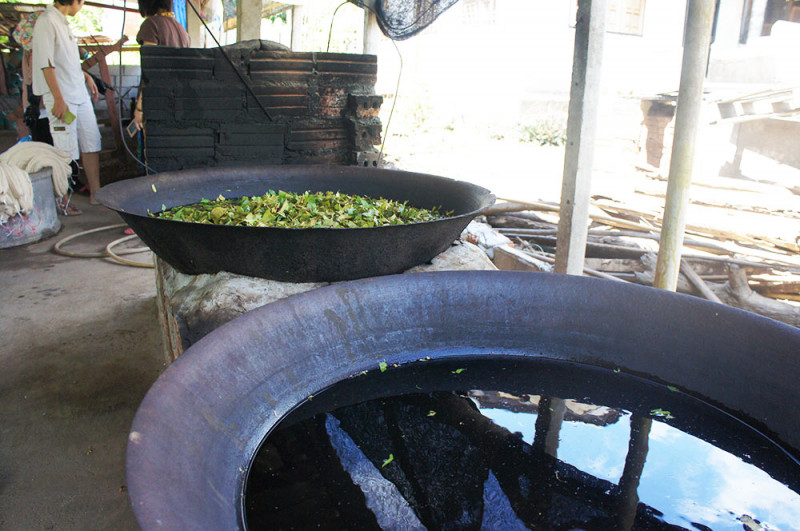
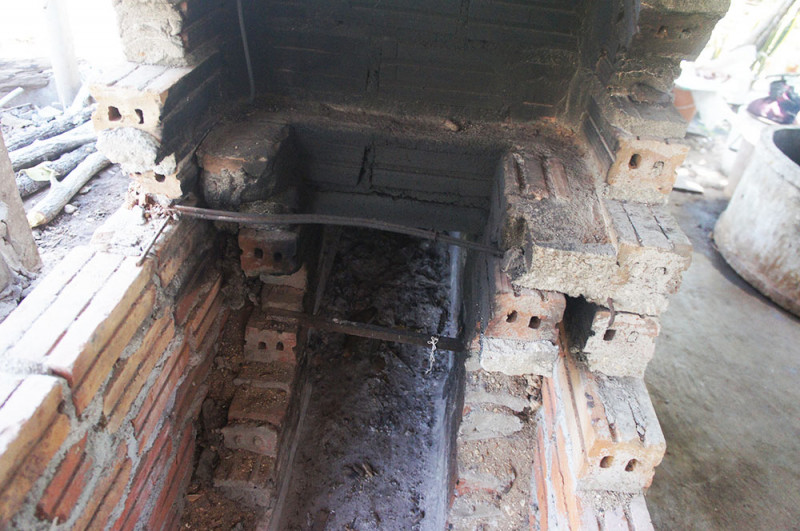
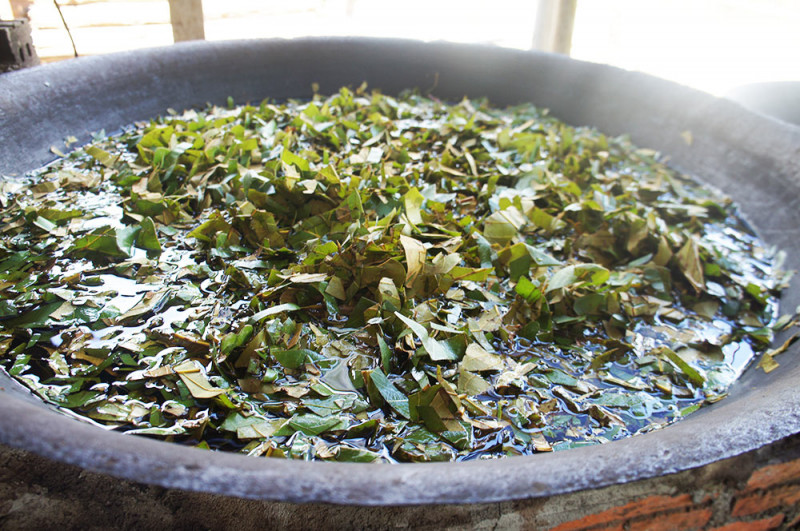
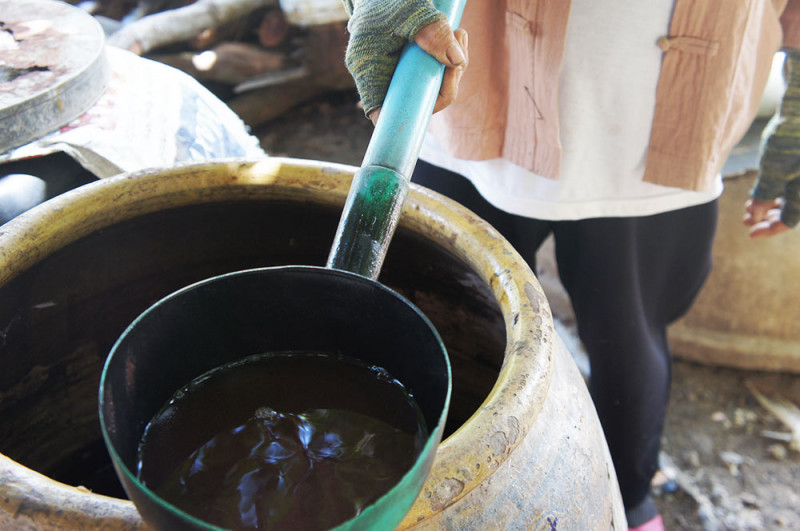
The beans are soaked in water for a long time. The smell is horrendous! Needless to say the lid is left firmly on the pot while it soaks. A bit like indigo dyes, this pot is never emptied - the beans are simply added and removed as required. There's no science or maths involved, keeping the pot "just right" is a skill developed over years and years.
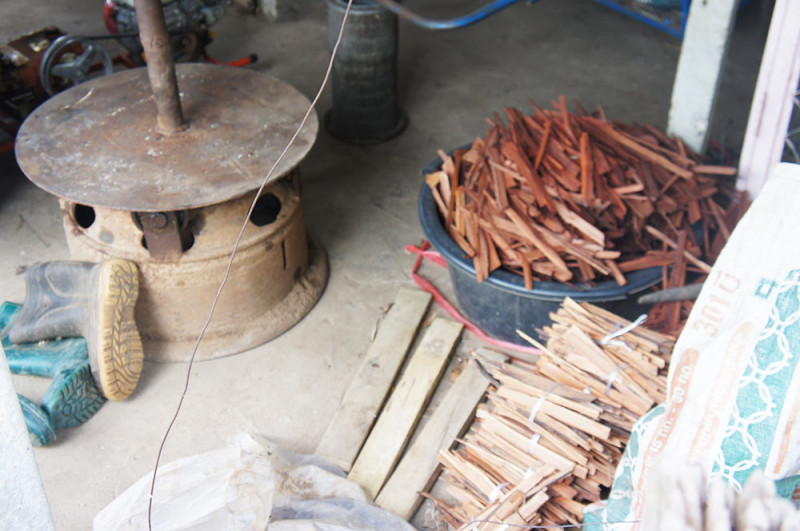
Here you can see all the chopped wood ready to be smoked. Smoking the bark brings out the incredible colours - from greys to lilac pinks. There's a beautiful smell to all the smoked bark. Once smoked they're chopped again, and sometimes pounded into a fibrous pile, which is much easier to dye with.
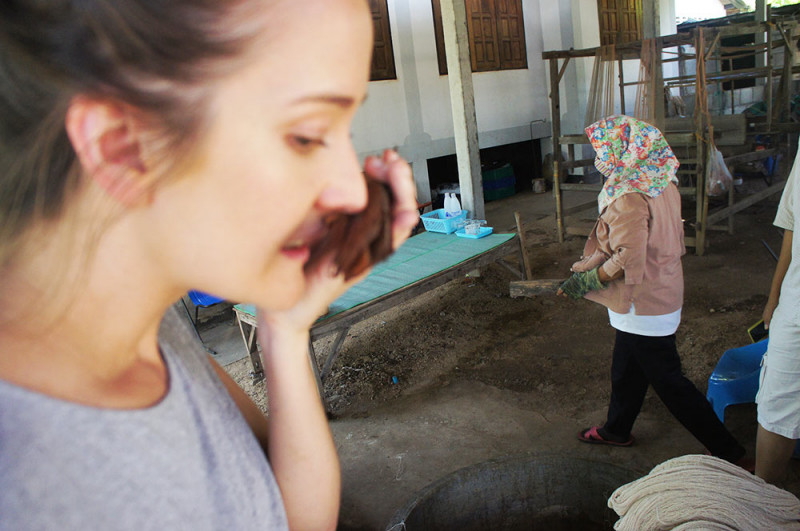
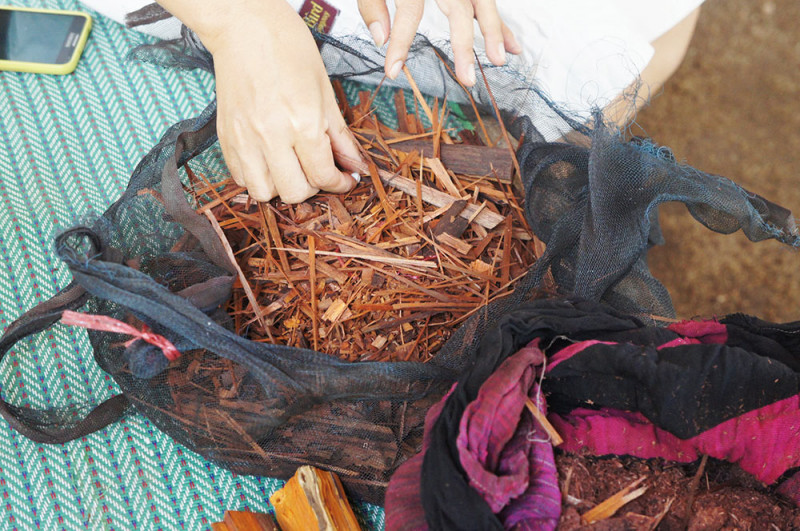
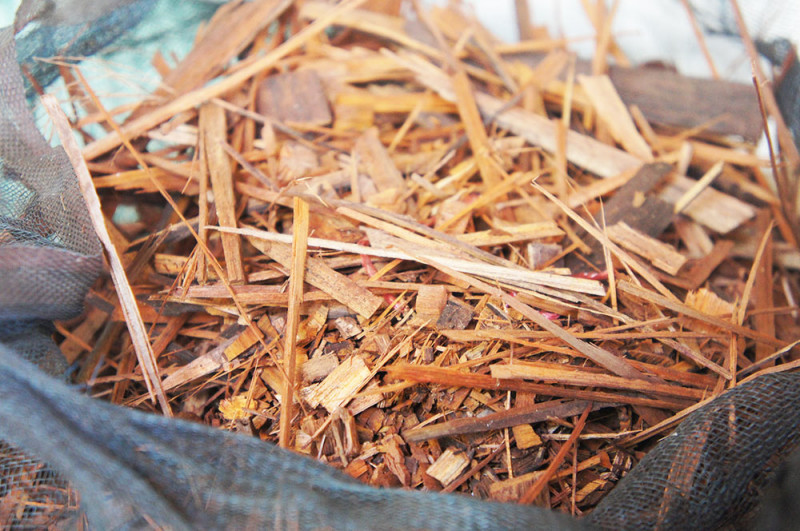
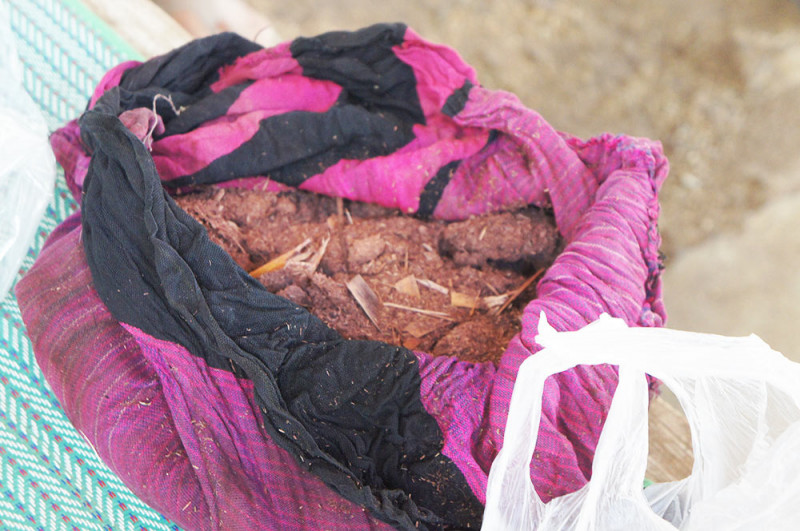
This is one of my favourite raw materials - a locally sourced stone. The stone is like a crumbly chalk and pounded into a fine powder.
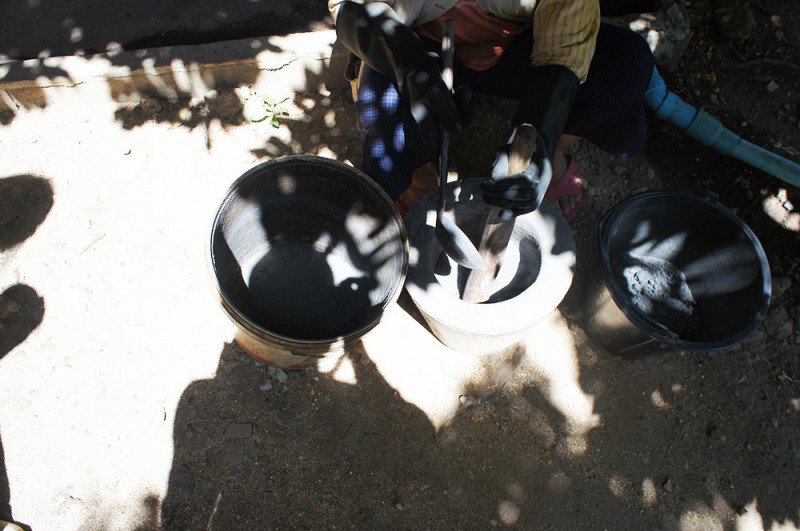
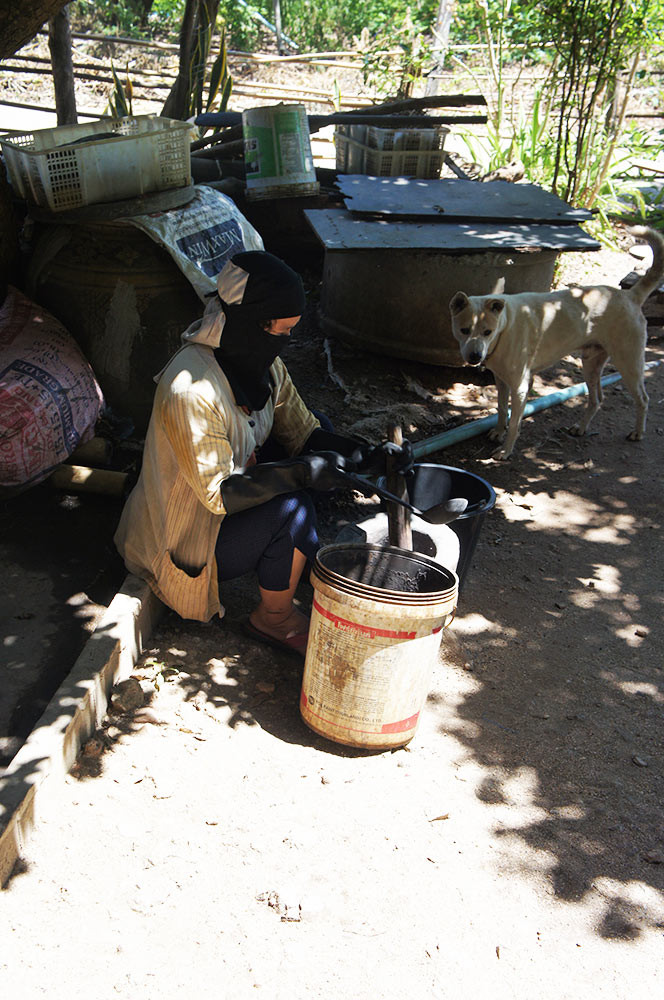
This is the final result, and the powder that's used to create an incredible variety of grey hues. Just breathtaking.
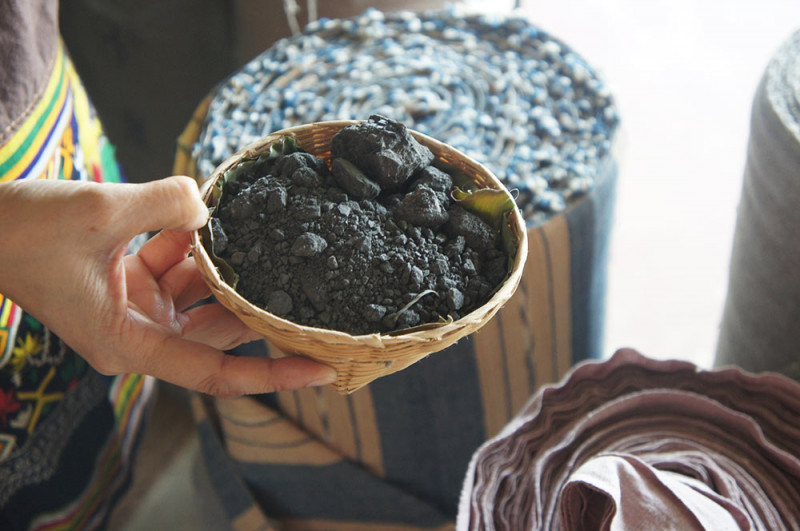
Now the yarns are ready for dyeing! They're tied in their hanks, which makes them a lot easier to unravel again when the time comes (although they're still knotted to heck when they come out of the dye bath!)
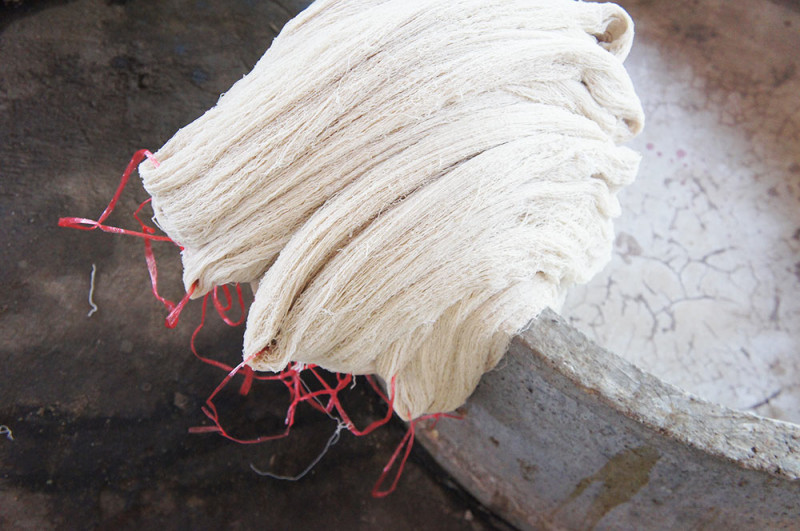
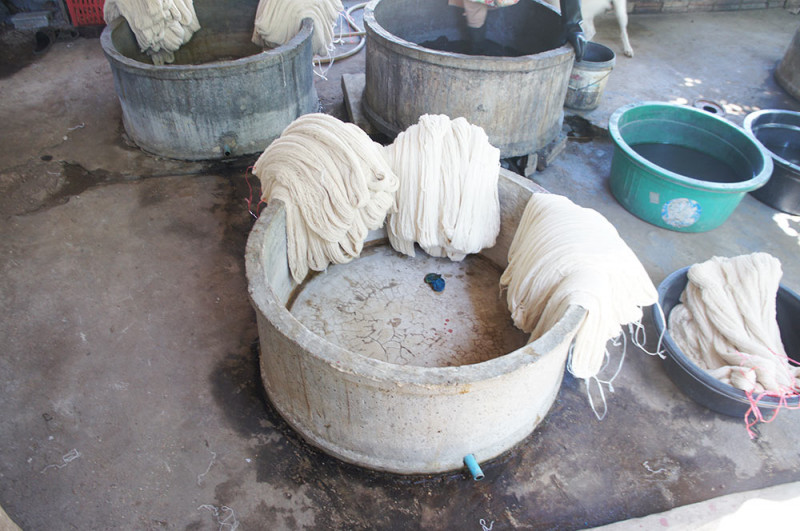
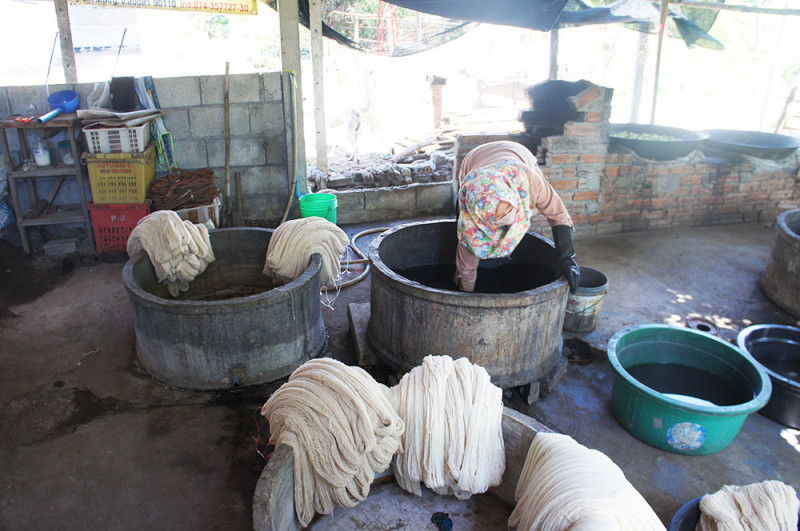
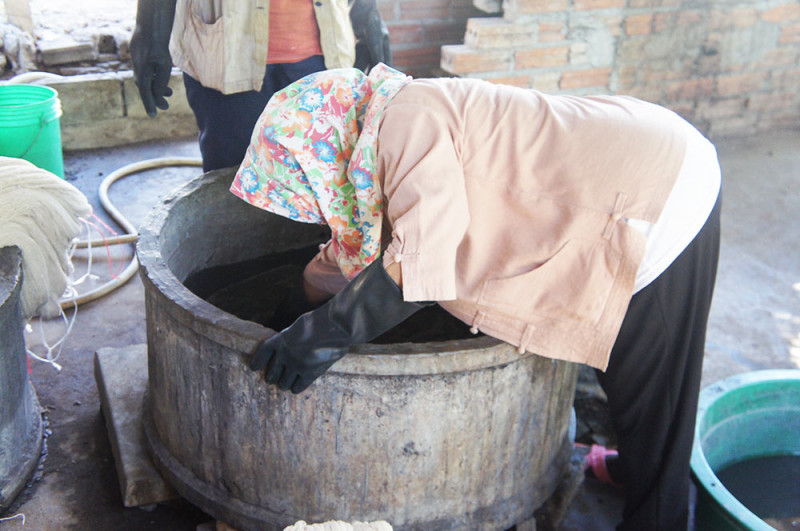
These wooden baths are filled with the dye stuffs and the hanks are placed inside.
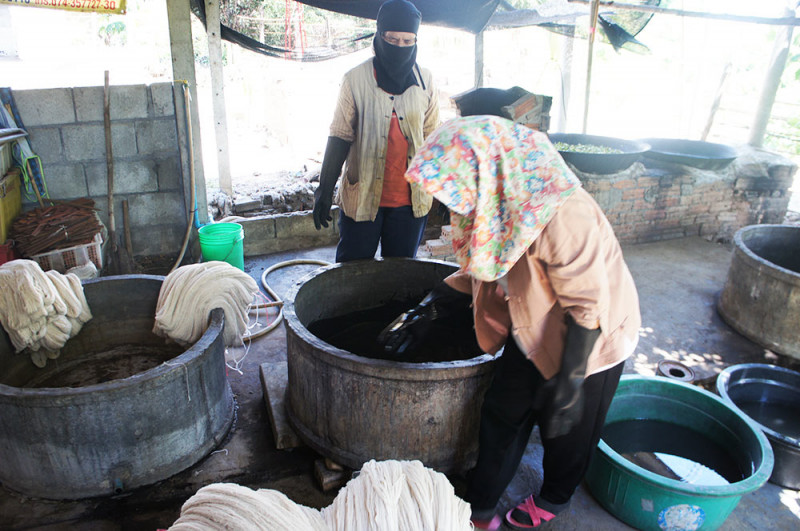
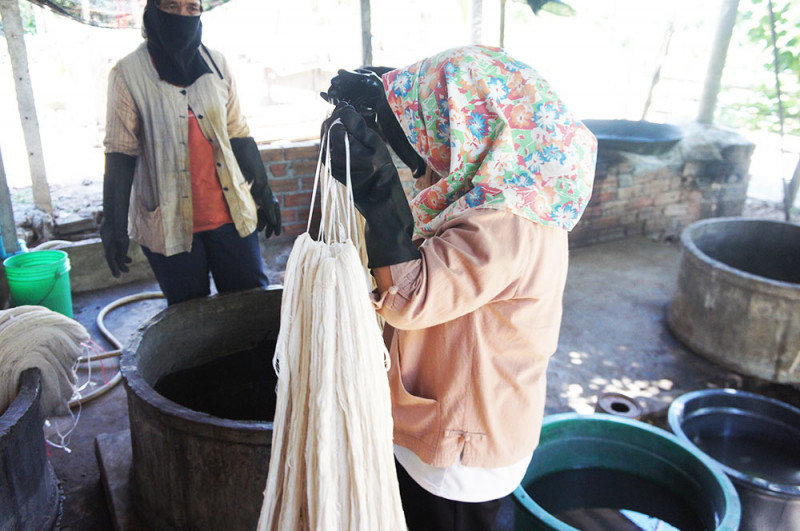
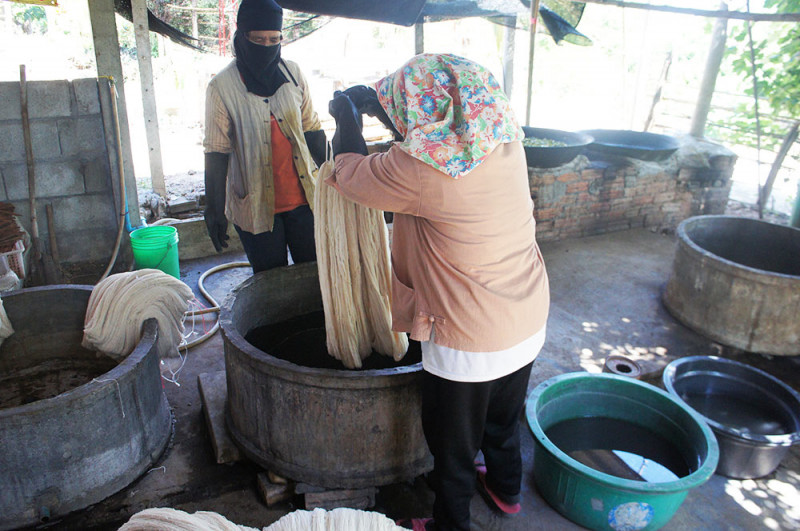
Then they're given a good old stomp to really get the colours into the fibres. It looks a lot like grape stomping.
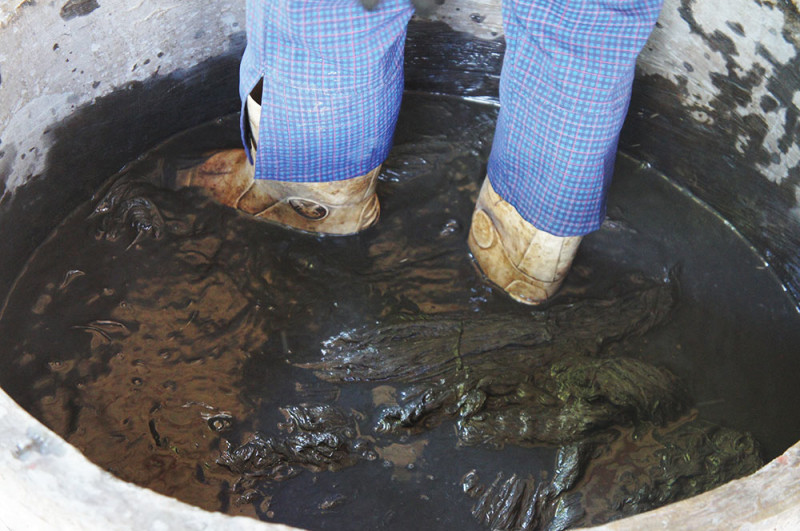
The yarns are pulled out of the dye baths, et voila - I told you the colours are stunning!
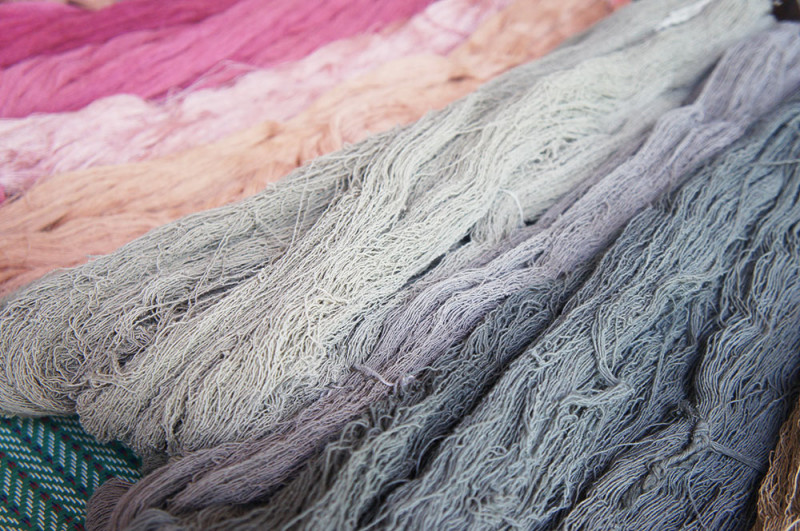
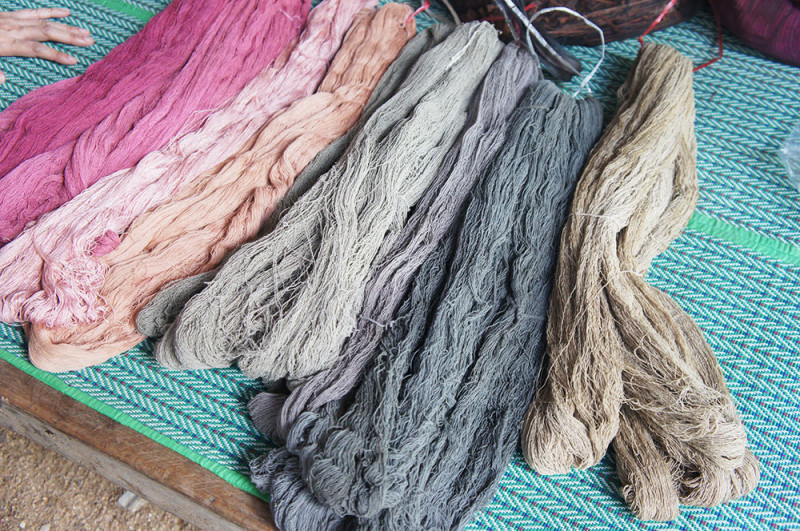
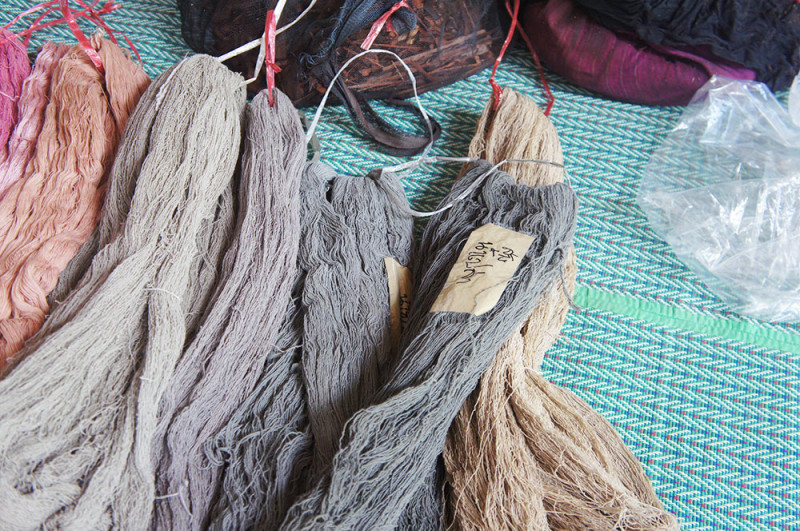
It's really important that the colours we choose are on trend. We always want our customers to be totally on trend, so all of our textiles are created and designed with this in mind. There's a lot of discussion about which colours to focus on depending on the season - both the design season and the time of year for sourcing the raw material!
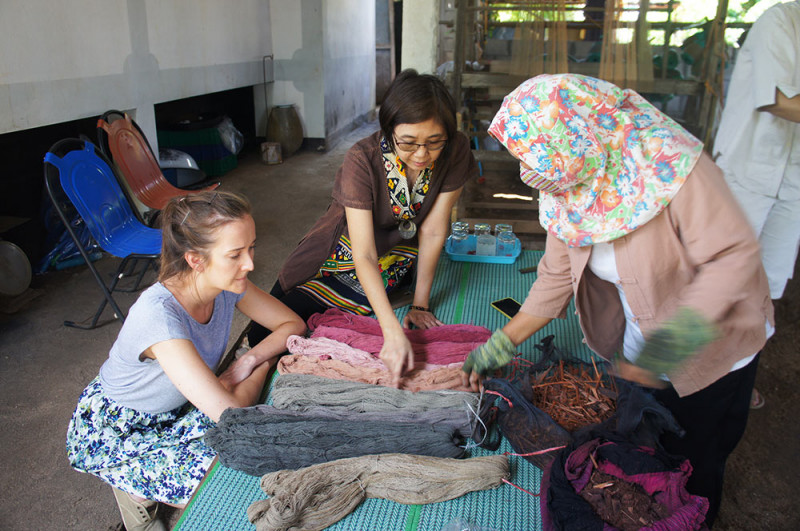
Now comes the tedious part: getting the threads untangled and onto cones ready for the looms. We use old bottles on a spindle to wind up the threads - talk about taking upcycling to the extreme!
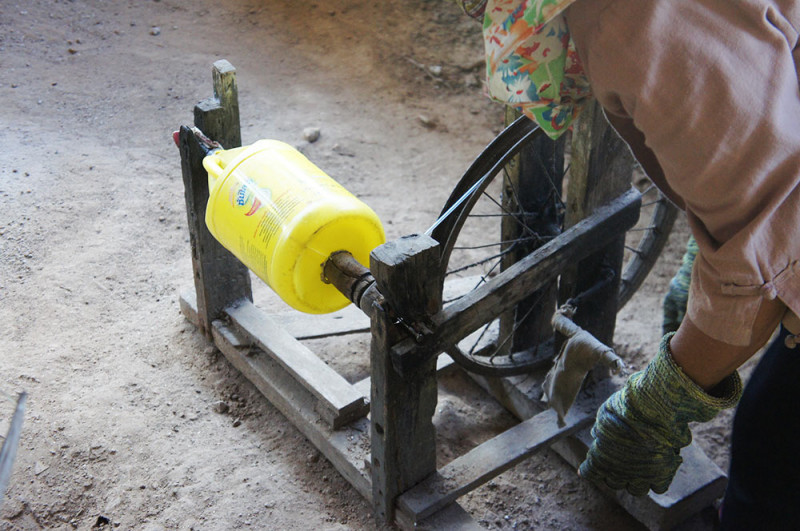
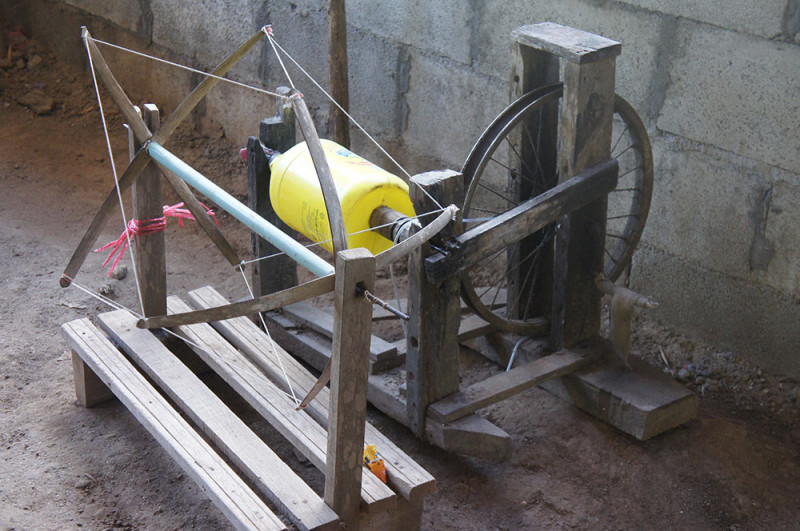
Here they are. Just look at how neat the spinning is! The tension has to be perfect, or the threads may not be placed on the loom properly.
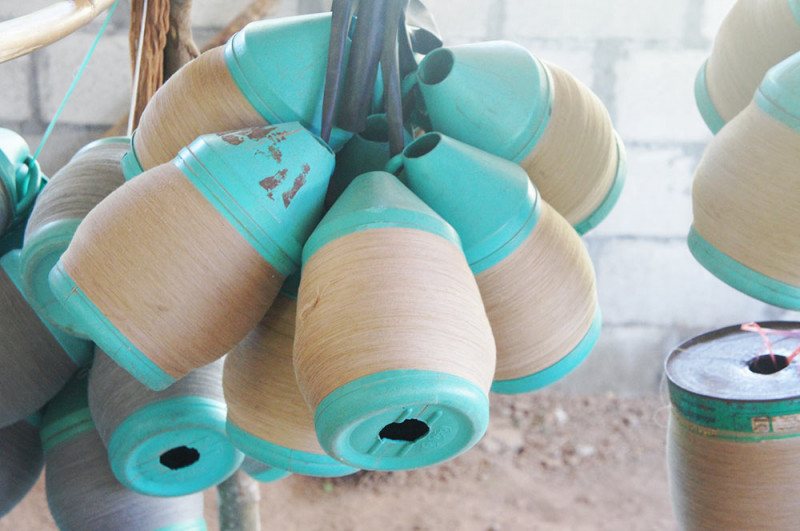
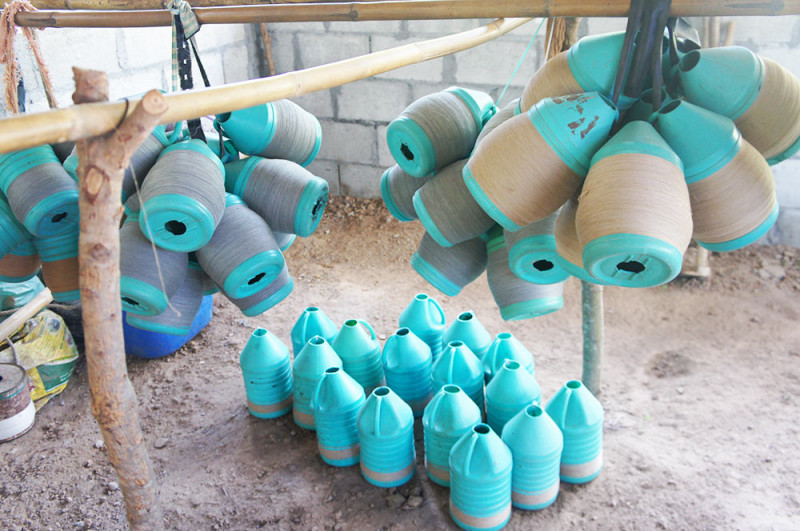
Here is the step before the yarns go onto the loom. The yarns are slowly unravelled and set up on this contraption. This makes the setup on the looms much easier.
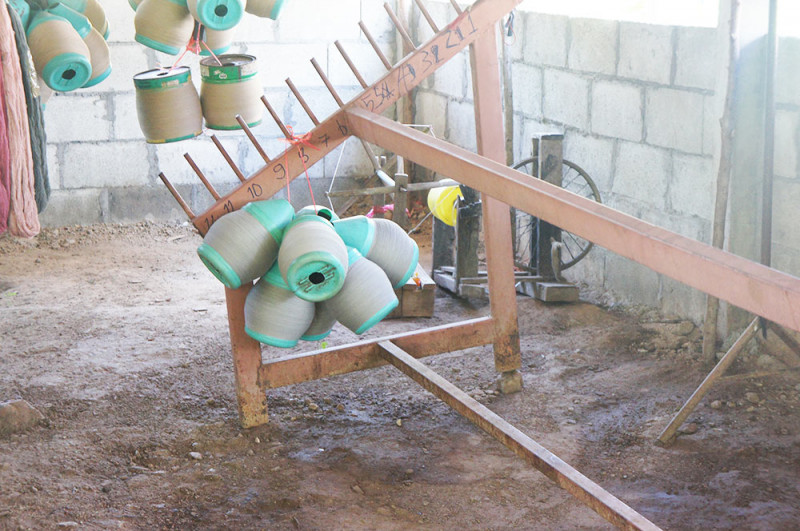
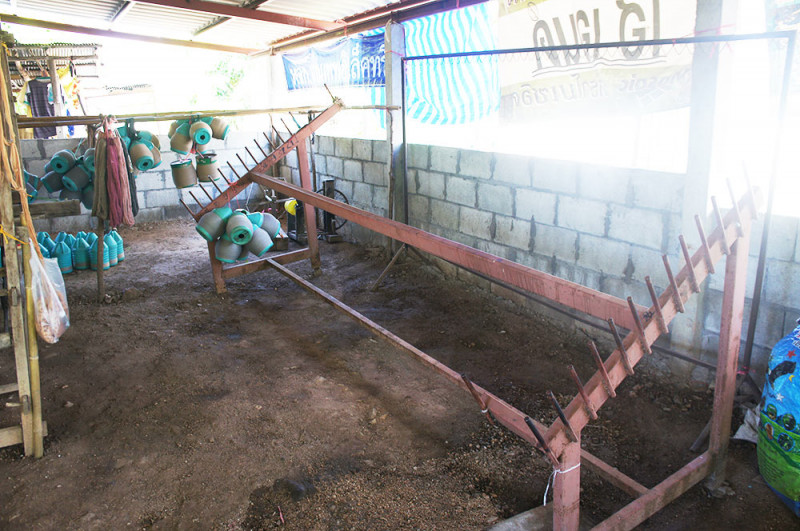
Some of the yarns are also spun onto smaller bobbins which will be used to thread the fibres on the loom through the weft (from left to right). Again, this process is all done by hand. Did you see me getting stuck in the image at the top of the page? I'm the slowest spinner of everyone, but with some of the weavers learning the trade from the age of three, they have a little lead on me! Even this relatively simple spinning process has a very specific technique you have to use in order to get the tension absolutely perfect. Your forefinger and thumb must be pinching the thread together before it is wound onto the spindle. And the hand must be positioned over the thread, not under. If the tension isn't right, the texture will be completely out when it comes to weaving the final fabric on the loom (the next step!).
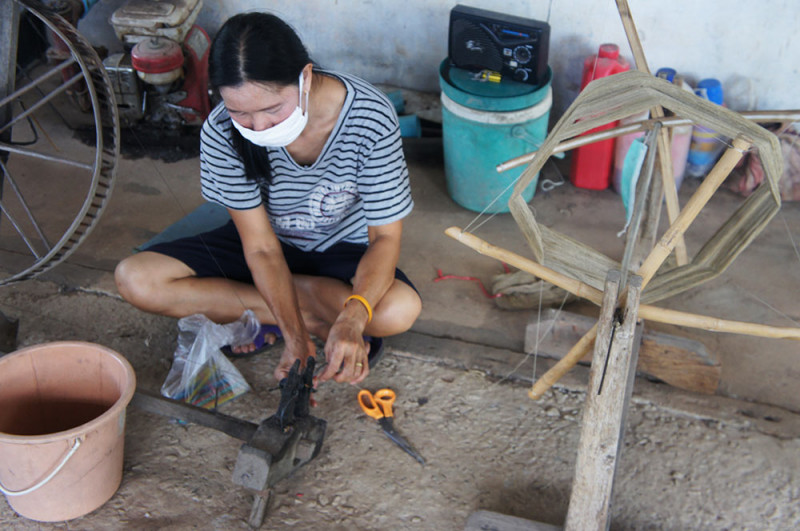
This is where the magic starts to happen and the final fabric takes it shape. Here you can see every individual thread meticulously placed onto the looms. For the obsessive compulsive of us - it's a dream to behold. The technicality, precision and skill that it takes to thread a loom, let alone begin to weave, will never cease to amaze me!
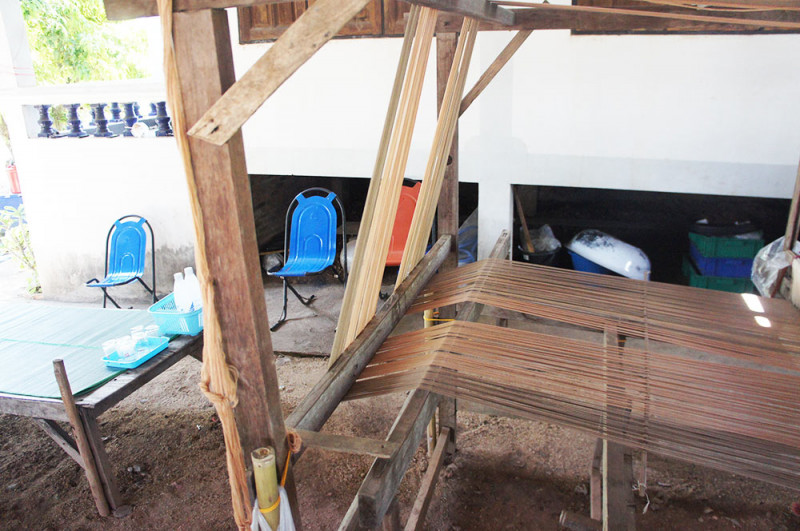
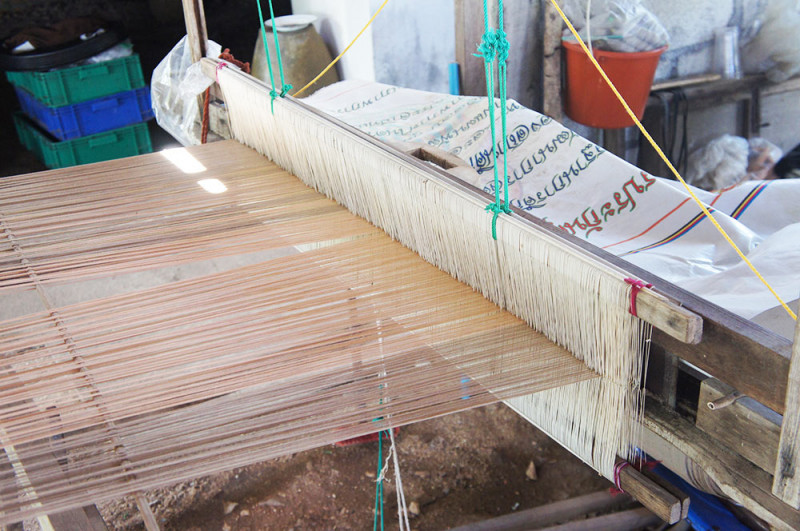
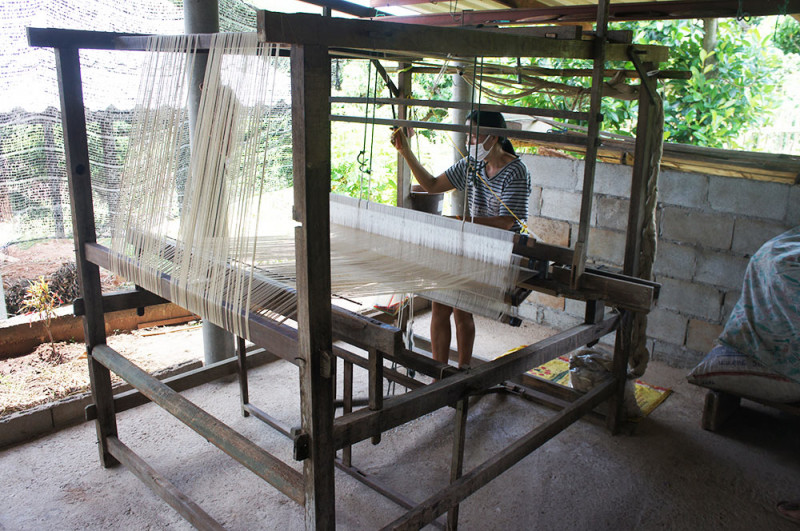
But the best part of the whole process is this part - when I get to bring it home!
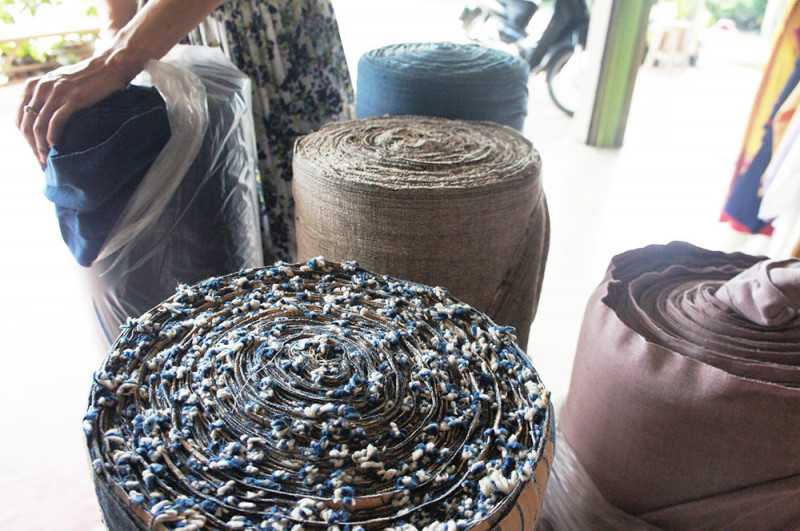
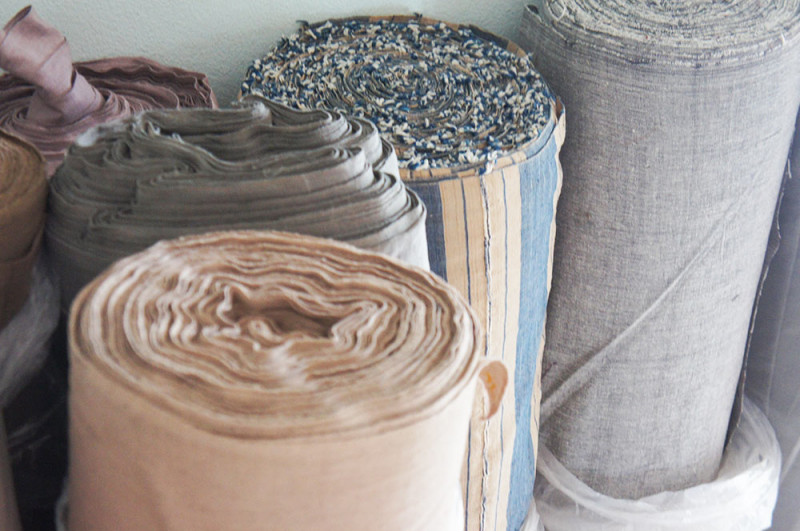
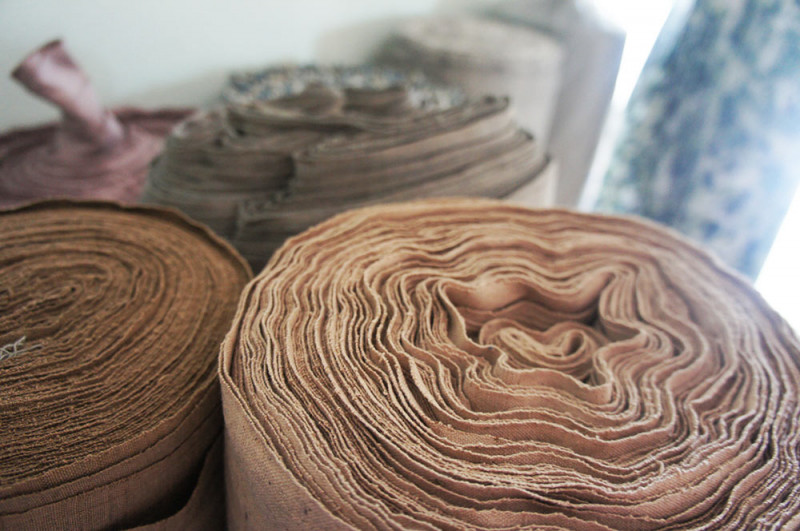
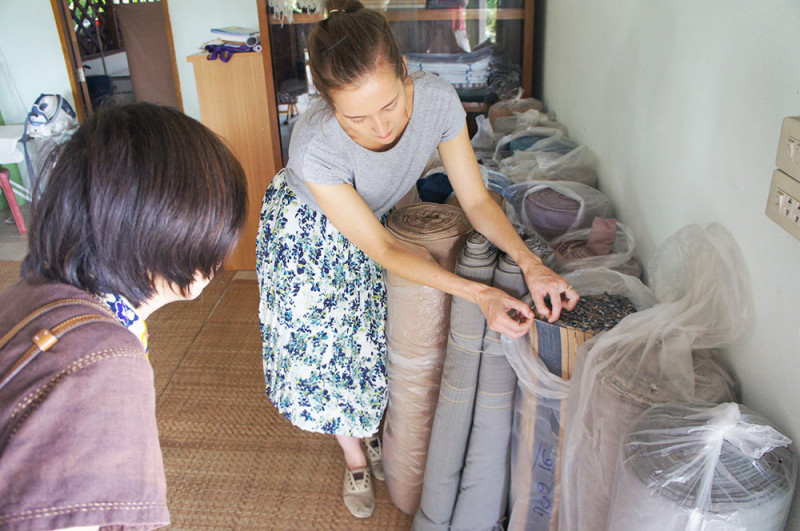
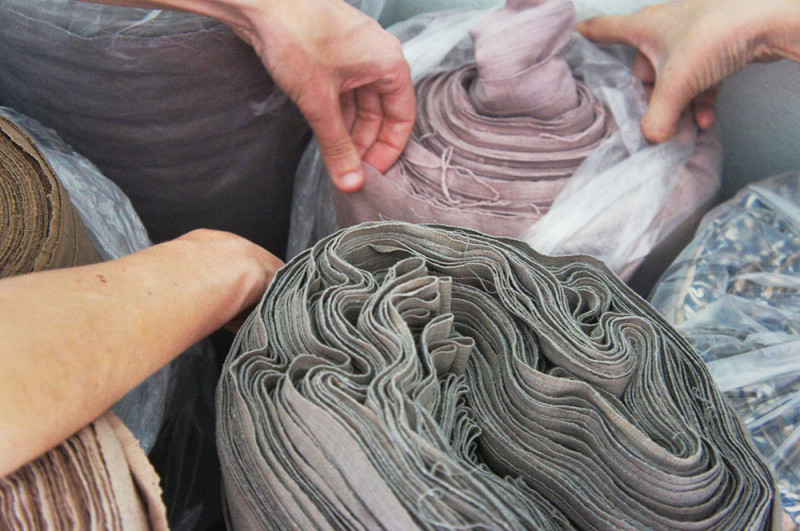
Now you can see why these fabrics are my little pieces of paradise. I find it absolutely incredible that all of this work goes into producing a length of fabric, and often, us buyers back home have absolutely no idea about it. It is a truly incredible, beautiful process, and I'm so pleased that you've taken the time to find out exactly who makes your fabrics and all of the processes involved. Thank you!
If you'd like to see some of these beautiful textiles, check out the latest arrivals in the shop!
If you like this story and you want to know more about our ethical fabrics - sign up to our newsletter where we send out our latest information!
The work that goes into a length of fabric- Astounding! #ethicalfabric

Such an array of #colours from #naturaldyeing!

